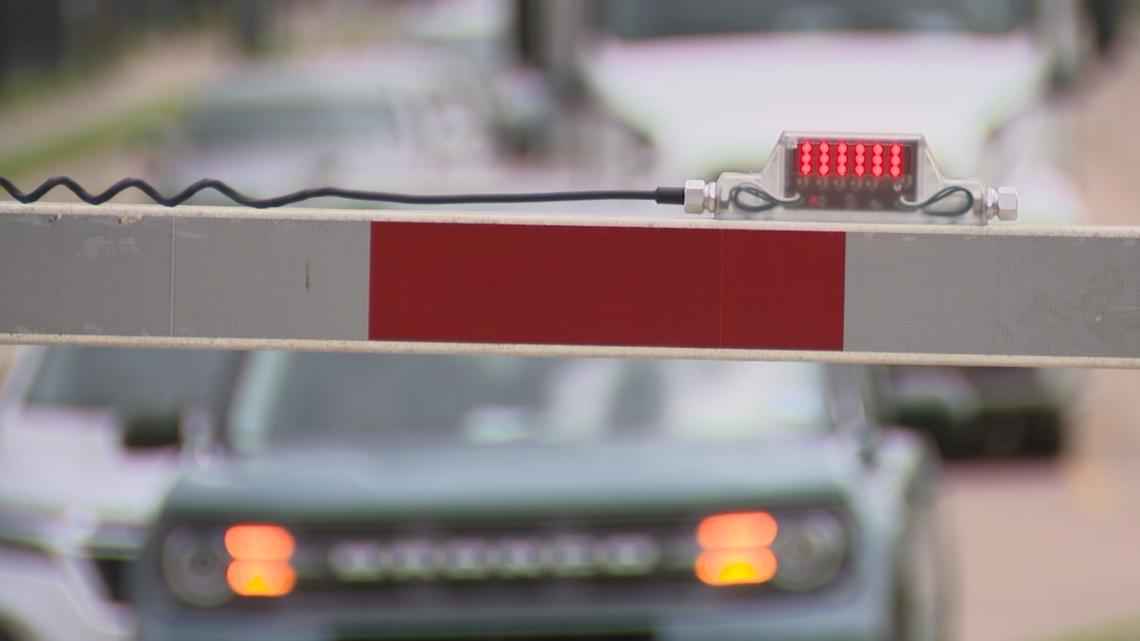
The Houston Fire Department said the stalled trains have blocked them hundreds of times this year, often leading to delays in responding to calls.
HOUSTON — Stopped trains have been an issue in Houston for years, and they have impacted thousands of drivers in the first half of 2025.
They’re not only frustrating for drivers, but there’s a potentially life-threatening safety issue when emergency responders get stuck at the crossings.
In the first six months of the year, the Houston Fire Department said they’ve been blocked by trains 643 times. Half of those calls resulted in delays.
KHOU 11 talked with folks in one of the most impacted areas, a two-mile radius on the city’s east side.
We then took their questions to those who can create solutions.
Our first stop took us to Mandola’s Deli.
“I’ve been with Mandola’s since I was able to walk,” Joseph Mandola said.
He said the deli has dealt with stalled trains at nearby tracks since opening back in 1978. If you step outside the East Houston deli, you’ll see firsthand how the trains impact their business.
Mandola told KHOU 11 the trains will sometimes stop for hours in front of their main entrance off Leeland Street, which is just a few miles from where a train hub is located.
“How much business would you say it costs you every time the train is stopped?” Henderson asked.
“If I could quantify it, it would be upsetting,” Mandola said.
Since 2021, Texas has led the nation in blocked railroad crossings, according to federal data. The same database shows Houston made up at least half of the state’s total from 2021-2025.
“For first responders that are trying to get in or out, you know not to come through some of these routes,” Huey German-Wilson said. He’s the president of Super Neighborhood 48, as well as Trinity Gardens.
German-Wilson also works on the Northeast Houston Redevelopment Council to advocate for solutions to issues impacting their eastside community, including trains.
“Of course, it takes dollars and uh it’s a conversation as to who is willing to spend those dollars,” German-Williams said.
Several Houston organizations met with TxDOT recently to discuss ideas that worked in other areas impacted by trains and what could be brought to Houston.
“So, is lack of funding the reason why we haven’t seen more overpasses and underpasses go in place for these trains?” Henderson asked East End District Road and Rail Safety Manager Jack Hanagriff.
“That’s one of the main ones. The other is, can you put a bridge there? You know, the streets are narrow and may not be able to accommodate it,” Hanagriff explained.
The East End District Road and Rail Safety Division is a community effort designed to tackle transportation issues.
According to its website, they try to directly address traffic flow issues such as “blocked railroad crossings, damaged crossings, inadequate pedestrian access and malfunctioning traffic control devices.”
They are also currently working with city officials to “analyze crossing impacts and researching motorist assistance technology to help [drivers] get around impaired crossings.”
Hanagriff said they’ve already worked to install signs with directions around blockades, sensors at tracks to collect data and curfews for trains near certain schools.
KHOU 11 used some of the signs after getting stuck behind a train at the Leeland Street crossing.
“We had to work closely with the City of Houston and put things in place,” Hanagriff said.
Eastside community leaders now have hope that their area will be considered for whatever changes are made in the future.
“Yes, that people are listening. And they have the will to bring about change to address what these taxpayers are going through,” Keith Downey with the Northeast Houston Redevelopment Council said.
The majority of trains that stop on tracks, per federal data, are with Union Pacific. They released the following statement to KHOU 11:
“Union Pacific operates an extensive rail network in Houston, carrying the goods we use every day in America and keeping thousands of trucks off already congested highways. Over the past decade, we have invested more than $1 billion into the area’s rail infrastructure to improve mobility, while working with city and other stakeholders to identify long-term solutions, including grade separation projects that separate vehicle and train traffic.”
